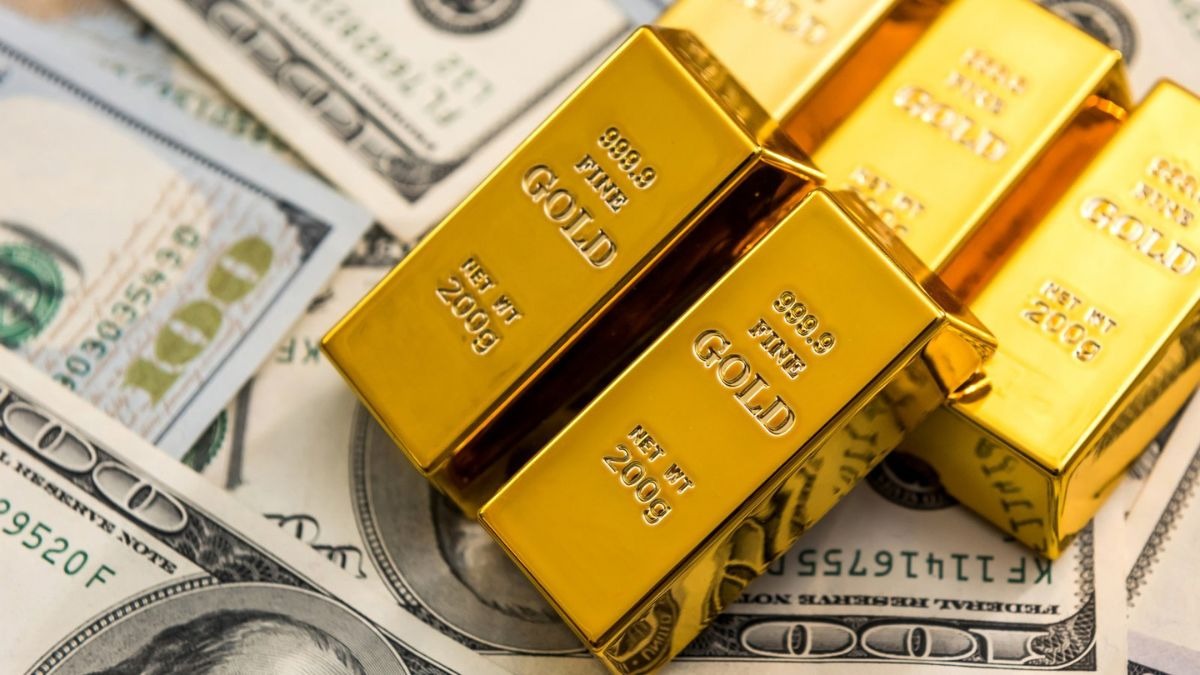

Introduction: Gold Prices Back in the Spotlight
Gold prices have once again taken center stage in global financial markets, edging closer to record highs as investors weigh a mix of inflation risks, U.S. monetary policy shifts, and geopolitical uncertainties. According to Bloomberg, bullion traded at around $3,415 an ounce in Asia, placing it within striking distance of the all-time high of about $3,500 an ounce set earlier this year. This resurgence in demand highlights the enduring role of gold as both a hedge against inflation and a safe-haven asset amid turbulent times.
The Role of Inflation in Driving Gold Prices
One of the most immediate factors influencing gold prices is the growing expectation of rising inflation in the United States. Recent economic data showed the U.S. economy expanding faster than anticipated, raising concerns that consumer prices could accelerate. The upcoming personal consumption expenditure (PCE) report will be pivotal, as it could dictate the Federal Reserve’s flexibility in cutting interest rates. Since gold does not yield interest, higher inflation coupled with lower rates makes bullion more attractive compared to bonds and other fixed-income investments.
Federal Reserve Policy and Market Expectations
Federal Reserve Governor Christopher Waller, a potential successor to Jerome Powell as Fed Chair, has already hinted at supporting a quarter-point rate cut in September, with more to follow in the next three to six months. Futures markets currently price in an 85% chance of a rate cut next month. However, uncertainty looms over how inflation and labor market trends will evolve, particularly given the ripple effects of President Donald Trump’s tariff policies. Such policy shifts create volatility, often providing an additional boost to gold prices as investors seek shelter.
Geopolitical Tensions and Gold’s Safe-Haven Appeal
Beyond U.S. domestic policy, global tensions have further underpinned gold prices. Trade disputes, geopolitical rivalries, and concerns over central bank independence have all contributed to strengthening bullion’s role as a safe-haven asset. Trump’s controversial move to oust Fed Governor Lisa Cook has raised alarms over the political pressures facing the Federal Reserve, fueling further uncertainty in financial markets. Historically, such conditions have amplified investor demand for gold, reinforcing its reputation as a safeguard against instability.
ETF Inflows and Central Bank Strategies
Another crucial factor supporting gold prices is the consistent inflow into gold-backed exchange-traded funds (ETFs) and the diversification strategies of global central banks. Many countries have been increasing their gold reserves to reduce reliance on the U.S. dollar. This trend is especially significant as it not only signals confidence in gold’s long-term value but also reinforces its global monetary role. Combined with heightened investor interest, these flows add a structural layer of support for bullion prices, ensuring demand remains steady even as short-term market conditions fluctuate.
Comparisons With Other Precious Metals
While gold prices have been trending upward, other precious metals such as silver, platinum, and palladium have experienced more muted movements. As of early Friday in Asia, silver remained steady while platinum and palladium edged lower. This divergence underscores the unique status of gold as a monetary asset, beyond its industrial use cases. Investors often turn to silver as a secondary hedge, but the psychological and institutional weight carried by gold continues to dominate the safe-haven narrative.
Market Psychology and Investor Sentiment
Investor psychology plays a vital role in the trajectory of gold prices. In times of uncertainty, the instinct to preserve wealth often outweighs the pursuit of yield, driving capital toward gold. Market sentiment is currently shaped by a blend of optimism over economic growth and anxiety over policy missteps. This balance creates fertile ground for gold to thrive, particularly if inflation proves persistent or if rate cuts arrive more slowly than expected. As such, gold prices act as a barometer of investor confidence, reflecting deeper unease within financial markets.
The Broader Economic Context
The strength of the U.S. dollar also factors into the gold equation. While the Bloomberg Dollar Spot Index held flat after a recent dip, any sustained weakening of the dollar would provide another tailwind for gold prices. A weaker dollar makes gold cheaper for overseas buyers, further boosting demand. Meanwhile, Trump’s tariff policies, though aimed at reshaping trade dynamics, risk sparking inflationary pressures that may inadvertently benefit gold. As the global economy grapples with shifting supply chains, commodity markets are bound to see increased volatility.
Long-Term Outlook for Gold Prices
Looking ahead, the sustainability of current gold prices will depend on how effectively policymakers balance economic growth with inflation control. If the Federal Reserve moves too aggressively on rate cuts, it could stoke inflationary fears, further bolstering gold. On the other hand, if inflation data comes in weaker than expected, gold could face resistance near its record highs. Nonetheless, the underlying demand from central banks, coupled with persistent geopolitical frictions, suggests that gold prices will remain elevated in the foreseeable future.
Conclusion: Gold’s Enduring Role
Gold prices have climbed steadily this week, gaining about 1.3% and bringing them closer to historic highs. Inflows into ETFs, diversification by central banks, and ongoing market uncertainties have all converged to sustain gold’s upward momentum. While the future path of inflation and monetary policy remains uncertain, one thing is clear: gold continues to serve as a vital hedge and safe-haven asset. Whether inflation accelerates or geopolitical tensions intensify, gold prices are likely to remain a central focus for traders and investors seeking stability in an unpredictable world.

